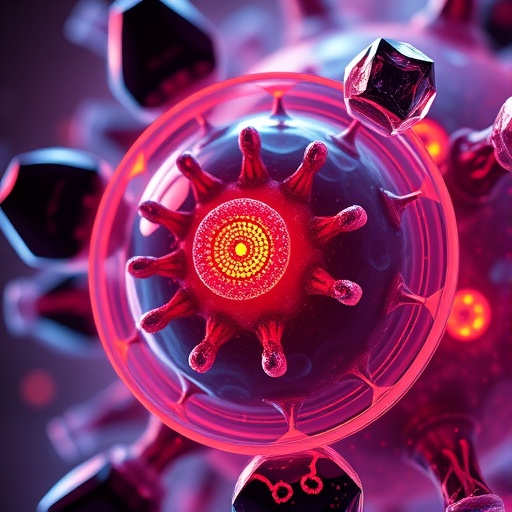In the last decade, scientific exploration into the intricacies of gene expression at the single-cell level has revolutionized our understanding of cellular identity and its implications in health and disease. Traditional methods, such as single-cell RNA sequencing (scRNA-seq), have allowed researchers to profile the transcriptome of individual cells, producing a granular map of mRNA molecules and their dynamics. However, the complex biological reality that mRNA abundance does not always translate linearly into corresponding protein levels has raised critical questions regarding how we interpret and utilize RNA data to understand cellular functionalities comprehensively.
This disconnect between transcript abundance and protein levels stems from numerous regulatory layers operating post-transcriptionally. Cellular mechanisms controlling mRNA stability, translational efficiency, and protein degradation collectively dictate the proteome landscape within cells. These processes are highly context-dependent and vary throughout different stages of cellular differentiation and function. Consequently, relying solely on RNA measurements provides an incomplete picture, especially when investigating lineage commitment and cellular maturation pathways.
Addressing this limitation, a collaborative research team spanning the Finsen Laboratory at Rigshospitalet, the Biotech Research and Innovation Centre (BRIC) at the University of Copenhagen, the Technical University of Denmark (DTU), and Helmholtz Zentrum München has pioneered the application of single-cell proteomics by mass spectrometry (scp-MS) in a biologically relevant human organ system. Specifically, their study focuses on early human blood cell differentiation, transitioning from multipotent stem cells to mature blood cell types, charting protein-level changes with unprecedented resolution.
.adsslot_SgWUPYfr1p{ width:728px !important; height:90px !important; }
@media (max-width:1199px) { .adsslot_SgWUPYfr1p{ width:468px !important; height:60px !important; } }
@media (max-width:767px) { .adsslot_SgWUPYfr1p{ width:320px !important; height:50px !important; } }
ADVERTISEMENT
Single-cell proteomics by mass spectrometry breaks away from traditional nucleic acid-centric approaches by directly quantifying proteins—the functional effectors of cellular behavior. This technique, still in its infancy, has overcome enormous technical challenges including exceedingly low protein quantities present in single cells, requiring ultra-sensitive instrumentation and innovative sample preparation protocols. The researchers successfully employed scp-MS to detect thousands of proteins per cell, sufficiently covering the dynamic proteome landscape within developing hematopoietic lineages.
A critical breakthrough unveiled by this study is the nuanced divergence between mRNA and protein profiles at different stages of differentiation. While more differentiated blood cells displayed strong correlations between transcript and protein levels, stem and immature progenitor cells revealed significant discrepancies. This disparity highlights regulatory phenomena unique to early differentiation stages involving rapid mRNA turnover, variable translation rates, or differential protein stability — insights previously obscured by RNA-only analyses.
By integrating scRNA-seq data with comprehensive single-cell protein quantification, the team constructed a dynamic model capturing the full lifecycle of gene expression—from mRNA synthesis and decay to protein translation and degradation. This integrative approach reveals multilayered regulatory controls shaping cell fate decisions, emphasizing how protein-level measurements illuminate biological processes invisible to transcriptomics alone.
Further functional investigations into proteins that declined in abundance during differentiation despite stable mRNA levels revealed essential roles in maintaining stem cell populations. Through gene knock-out experiments, researchers demonstrated that depletion of these proteins precipitates a reduction in stem cell numbers, thereby impairing hematopoiesis. These findings underscore the indispensability of protein-level regulation in sustaining adult stem cell niches and ensuring adequate blood cell replenishment.
The implications of this research transcend basic biology, offering promising avenues for medical advancements. The ability to directly measure proteome dynamics at single-cell resolution in primary human tissues opens new frontiers for understanding developmental disorders, malignancies such as leukemia, and regenerative processes. It provides a powerful platform for identifying novel therapeutic targets that would be otherwise concealed by RNA-level studies.
Co-senior author Erwin Schoof of DTU emphasizes the transformative potential of this technology: “Mass spectrometry-driven protein profiling delivers a layer of biological information paramount to decoding how individual cells navigate their fates. What once seemed like science fiction—measuring thousands of proteins in single human stem cells—is now reality, propelling single-cell biology into an era of unprecedented clarity.”
Simultaneously, the study exemplifies how advanced technological development and interdisciplinary collaboration empower breakthroughs. By uniting expertise in proteomics, computational biology, and stem cell research, the consortium realized a holistic understanding of hematopoietic differentiation. Computational health sciences, led by thought leaders such as Fabian Theis at Helmholtz Munich, played a pivotal role in modeling and interpreting complex, multidimensional datasets.
The researchers are hopeful that this integrated proteomic-transcriptomic methodology will soon become routine in studying other organ systems and disease states. Its adoption could revolutionize diagnostics, enabling clinicians to detect hidden dysregulations at the protein level before clinical symptoms manifest, thereby facilitating earlier interventions.
Their upcoming publication in Science marks a seminal moment in single-cell biology, evidencing how combining cutting-edge mass spectrometry with sophisticated computational frameworks reveals previously inaccessible layers of biological regulation. Just as telescopes expanded humanity’s knowledge of the cosmos, single-cell proteomics is expanding our vision into the intricate machinery underpinning life itself.
In conclusion, by capturing the dynamic interplay between mRNA and protein synthesis and degradation at single-cell resolution, this work ushers in a paradigm shift. It challenges the dominance of RNA-based methods, establishing protein-level measurements as essential for uncovering the full spectrum of cellular identity, function, and fate-determining mechanisms. This holistic perspective is critical for deciphering complex biological systems and developing innovative therapeutic strategies for some of the most pressing human diseases.
Subject of Research: Early human blood cell differentiation analyzed via single-cell proteomics and transcriptomics
Article Title: Mapping early human blood cell differentiation using single-cell proteomics and transcriptomics
News Publication Date: 21-Aug-2025
Web References: 10.1126/science.adr8785
References: Publication forthcoming in Science journal
Keywords: Single-cell proteomics, Mass spectrometry, Hematopoiesis, Blood cell differentiation, Stem cells, Transcriptomics, scRNA-seq, Protein expression, Gene regulation, Stem cell niche, Systems biology, Translational regulation
Tags: cellular differentiation pathwayscollaborative research in cellular sciencesgene expression analysisimplications of RNA data in healthinnovative techniques in cellular biologymass spectrometry in proteomicsmRNA dynamics in cellular functionpost-transcriptional regulation mechanismsprotein synthesis regulationsingle-cell proteomicstranscriptome profiling techniquesunderstanding cellular identity





